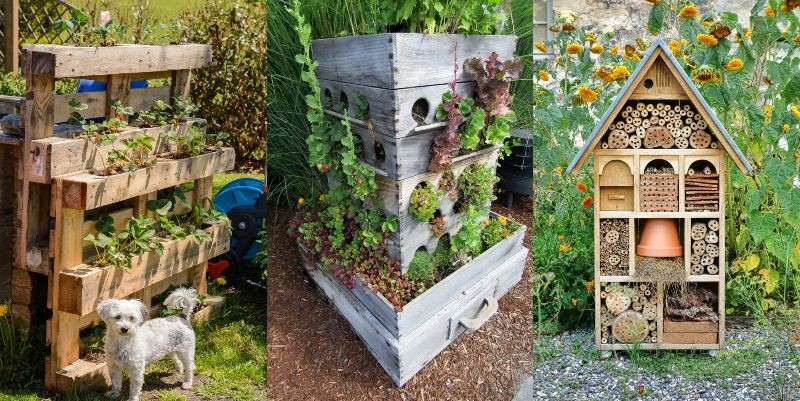
Kick off the new season in the great outdoors without spending a fortune.
Whether you want to expand your harvest, add some new and interesting backyard features, attract beneficial wildlife, or simply get organized, these fifteen gardening DIYs will help prepare you for the year ahead.
1. Start Your Seeds
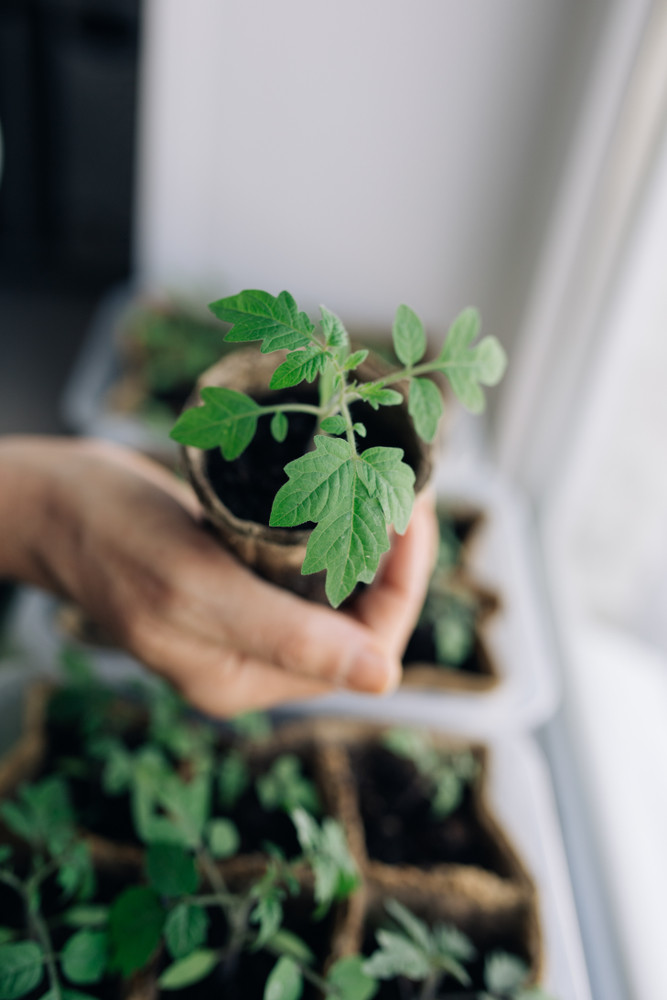
If you haven’t already got your seedlings started, it’s definitely time to get going! If you have missed the boat, make sure to file this idea away for next Spring!
Making DIY seed holders and starting your seeds indoors is cheaper than buying starter plants. It’s also a fun project for kids.
Nurture your seeds the eco-friendly way with some sustainable planting cups fashioned out of newspaper. They make for easy transplanting, and the soy-based ink newspaper (used in 90% of daily papers) becomes biodegradable compost – perfect for cultivating healthy organic plants.
Find out how to make them here.
2. Build a Potting Station
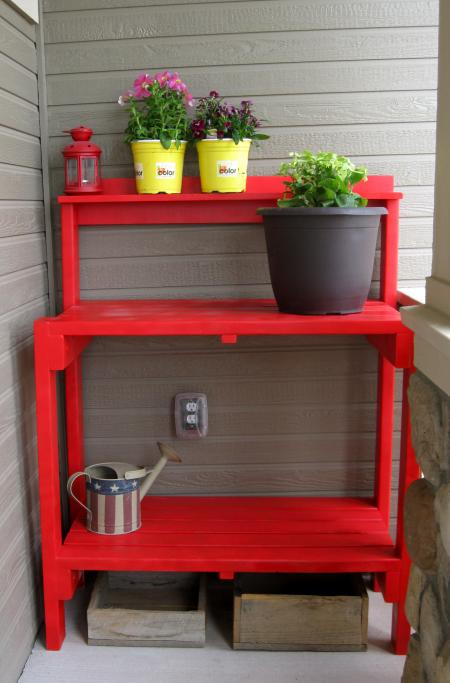
Perhaps one of the most useful things for any avid gardener, a potting bench makes garden tasks like transplanting seedlings or arranging cut flowers so much easier.
By creating a custom made potting station, you can construct it to be comfortable for your standing height, and design it to hold all the pots and tools you could ever need. You’ll also be saving a pretty penny as the store-bought benches don’t come cheap!
Potting stations can be built from scratch – like this one by Ana White, or they can be fashioned from an assortment of reclaimed and thrift store items. Try upcycling an old headboard (see tutorial here); some wooden pallets (tutorial here); an outdated dresser (see here); or a BBQ trolley (watch video here).
3. Compost
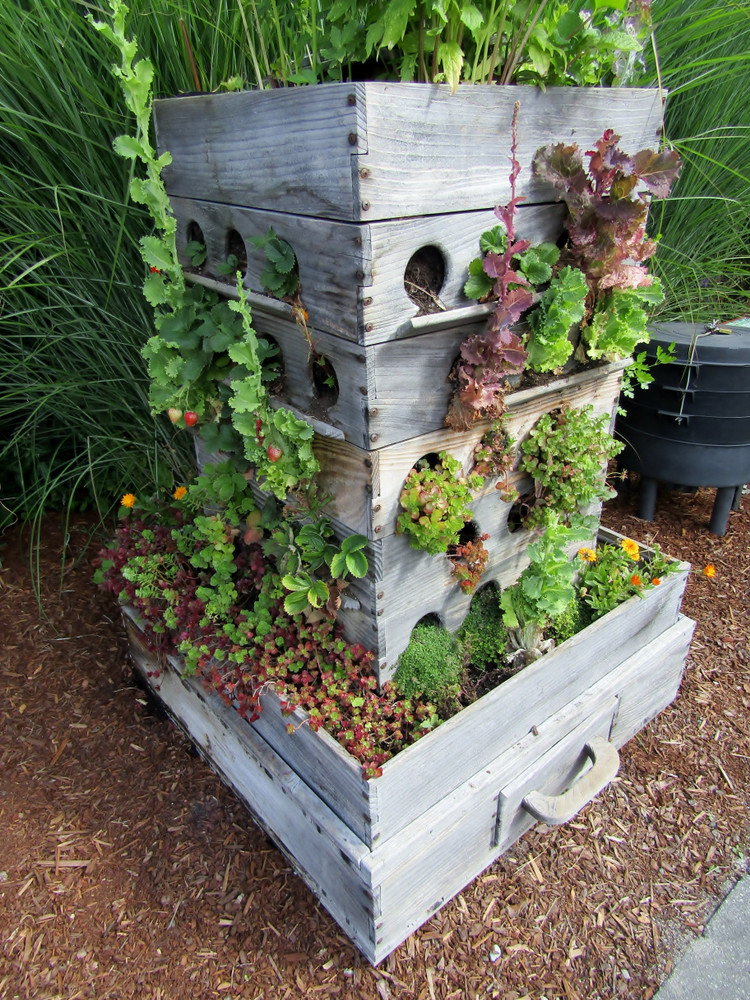
While minimizing waste is the top reason for composting, no thriving garden would be complete without the addition of some homemade, organic compost.
This nutrient rich matter helps improve soil structure and composition, wards off diseases and pests and boosts moisture retention, meaning you can save water.
Never composted before? No problem, this complete how-to guide will see you churning out ‘garden gold’ in no time – all while cutting down on the amount of food scraps and other organic matter you send to the landfill.
Why not go the extra mile and make your own compost bin too? This easy to build bin is efficient and environmentally friendly.
4. Organize Your Tools
As most organic gardeners know, a steady stream of healthy and delicious fresh produce requires some hard work.
If you’re not properly prepared, you may find yourself trudging back and forth to the garden shed in search of trowels, or spades, or gloves…not to mention twine and plant labels.
This year, get organized – and stylish at the same time – by making your very own tool bucket.
BeautifullyContained transforms a five-gallon bucket and some fabric into a garden organizer with a pocket for everything you could possibly need when out and about in the backyard! Follow the instructions here.
5. Supply a Bird Bath
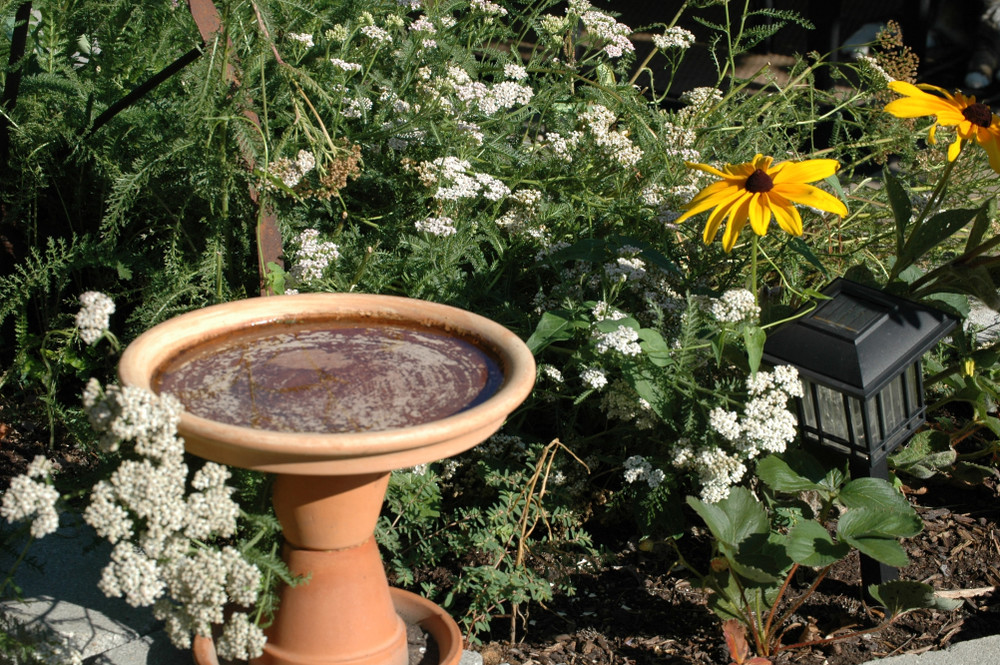
Attracting birds to your garden is one of the oldest and most natural forms of pest control. Most of them enjoy munching on a combination of seeds, berries and insects.
From late spring to early summer – when garden pests are at their peak – our feathered friends prioritize catching bugs to feed to their hatchlings.
Of particular interest to baby birds are cabbage worms, aphids, earwigs, grasshoppers, cucumber beetles and grubs.
If that’s not enough to convince you to build a bird bath, consider the hours of enjoyment you’ll get from seeing these winged beauties up close – bathing and chirping all day long.
Birds baths work as birds are attracted to water for drinking and washing – especially during the hot summer months. This pretty mosaic bird bath is surprisingly easy to make – see the tutorial here.
6. Make a Bug Hotel
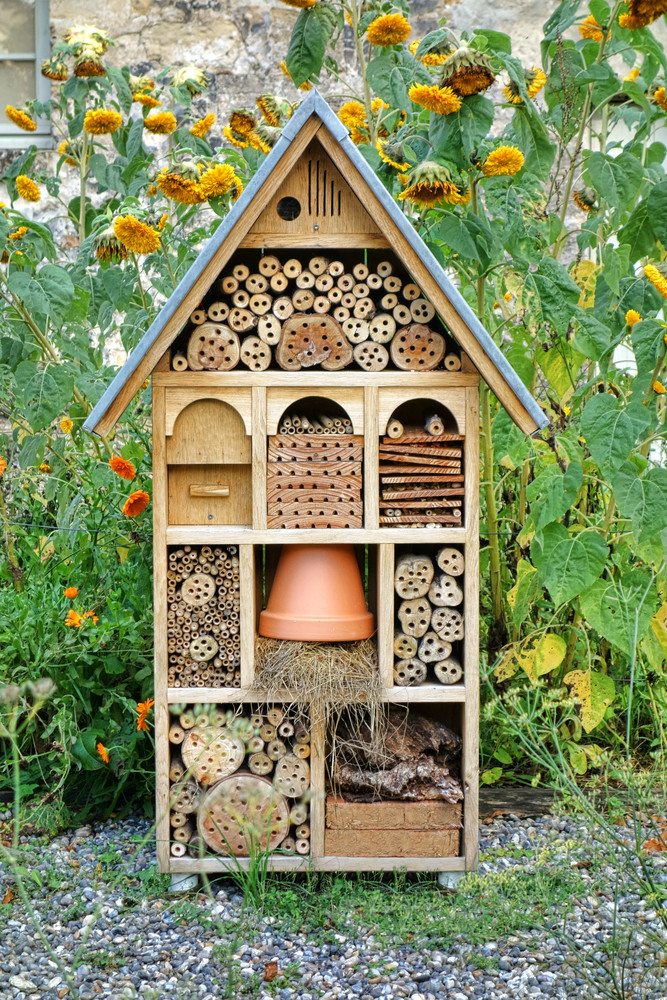
Birds aren’t the only natural forms of pest control – plenty of beneficial insects can help you keep your garden environment under control and your flowers and fruits free of bite marks.
Bees, wasps, ladybugs, butterflies and several species of moths will all appreciate having a space in your garden. To lure them in, construct a condominium made from a mixture of materials and compartments of differing sizes.
To make a completely cost-free insect hotel using recycled materials, check out Inhabitat’s instructions.
(Plus, here are another 20 ways to attract wildlife to your garden!)
7. Install a Pond
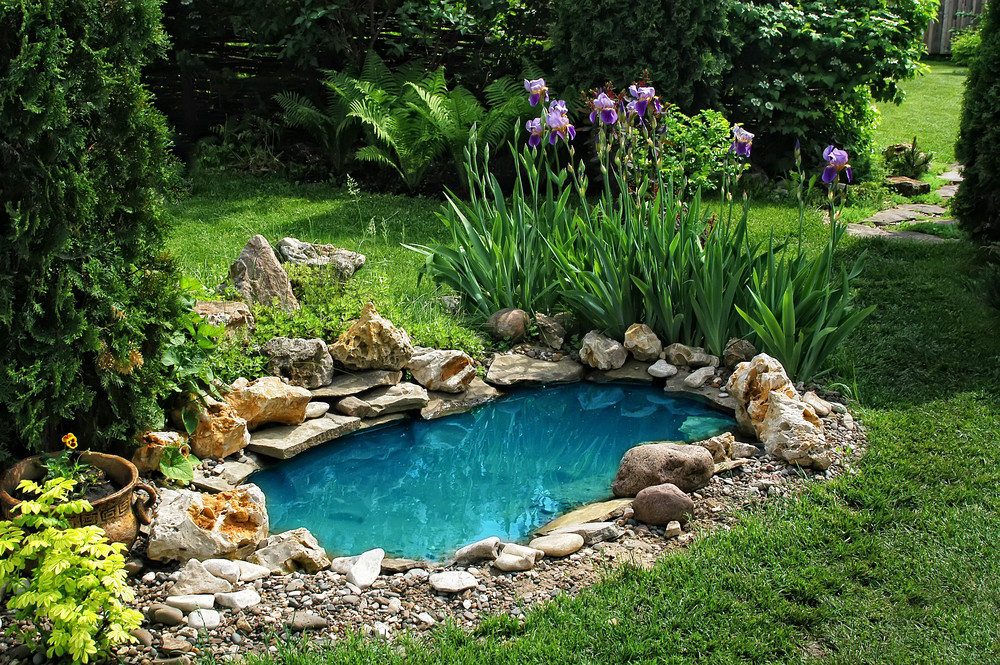
In addition to their tranquil beauty, ponds serve to attract a variety of beneficial wildlife to the garden.
Pest-eating birds will come to drink and bathe, and all sorts of insects will buzz around the place – helping to pollinate your plants for you. If you’re lucky, you’ll also draw in frogs, newts, hedgehogs and more!
While installing a pond might seem like a massive undertaking, it doesn’t have to be.
So many DIY pond projects are easily achievable – like this one from Homesthetics which upcycles an old tire into an amazing home pond.
Best of all, in addition to the tire(s), you’ll only need rocks, tarp, sand and gravel. Learn how to install it here.
8. Try an All-in-One Gardening Tool
Hauling a bunch of tools around the garden is annoying, and may even put you off gardening if you consider it to be more trouble than it is worth.
If you have a relatively small garden, why not forget about shelling out for separate and expensive gardening tools and make your own five-in-one tool to tackle all tasks? Use it to rake, hoe, drive stakes, furrow and dig small planting holes.
It may sound complicated but constructing this implement is easy, and can be completed in less than an hour! Here’s how.
9. Brew Homemade Natural Fertilizers and Pesticides
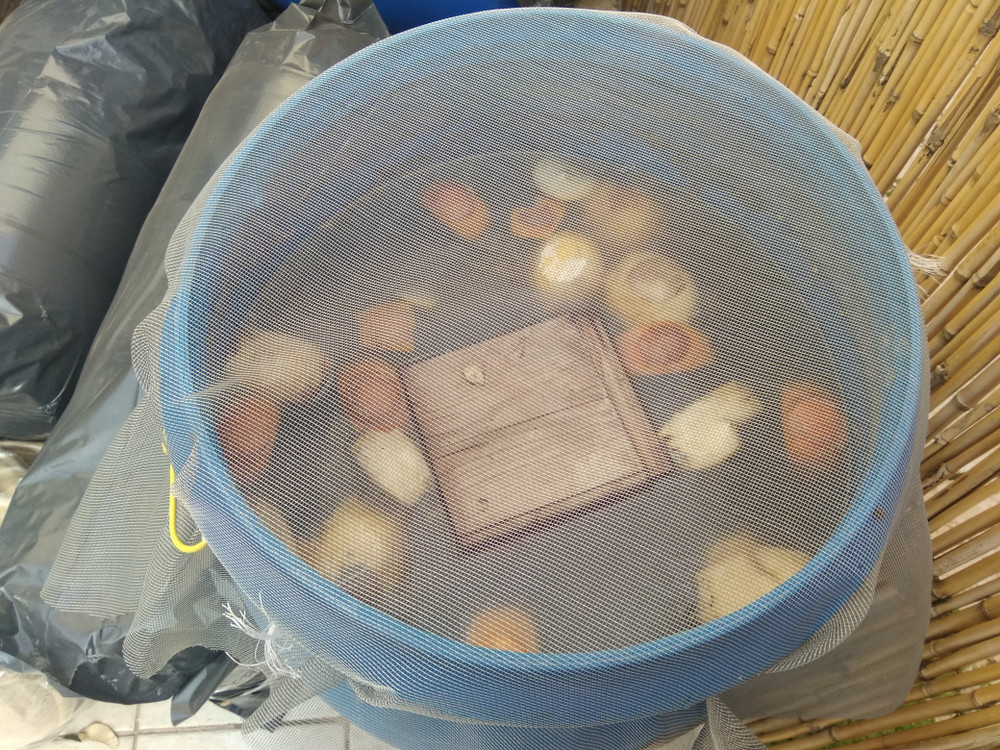
While many gardeners will stock up on store-bought fertilizers and pesticides this spring, thrifty organic growers will know that these conventional products are unhealthy to both humans and plants.
Instead, they will prepare for the growing season by brewing up a variety of natural alternatives.
To complement the work of birds and bugs, brew safe DIY pesticides like:
- This garlic spray, which has antibacterial, antiviral, and anti-fungal properties.
- A pleasant scented citrus insecticide, which works especially well on aphids.
- Or this fiery hot pepper spray, sure to repel even the toughest pest.
To make your own fertilizing teas, you’ll find some great recipes here.
10. Raise Your Garden Beds
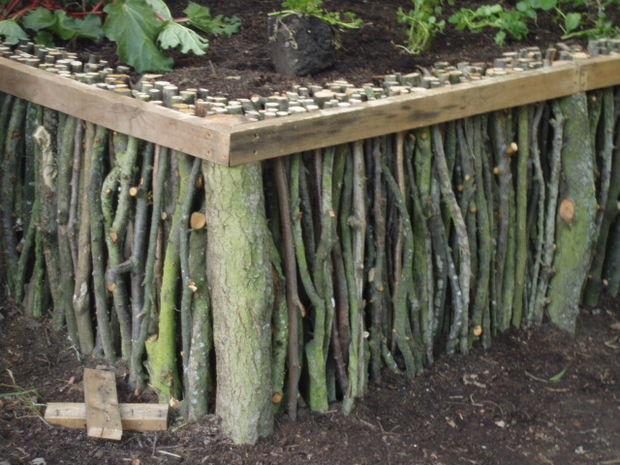
Get ready for planting and expand your garden by installing new raised beds – ready to receive a healthy dose of homemade compost.
Not only are raised beds one of the best ways to garden, but there are some creative ways to build your own raised beds from upcycled materials.
Employ one of the oldest methods of fencing using woven sticks to raise up garden beds – eHow outlines the process here.
Small branches and thicker logs are equally effective – follow Instructables’ steps and see how easy it can be. Finally, a ‘sack garden’ made from burlap sacks is a different take on raised beds – but is equally as eye-catching. Here is how you do it.
11. Upcycle Junk into Gardening Containers

If building raised beds isn’t an option for you, then consider container gardening. It’s ideal for those who are stuck for space, or for those who want to garden year round.
The cost of buying large pots at the store can rack up pretty quickly, but the good news is almost anything can be turned into a garden container if you give it enough thought.
Try it in your garden this Spring! Here are a few ideas to get you started: old shoes, unwanted colanders, a laundry basket, a wheelbarrow, a child’s toy.
12. Plant Upwards
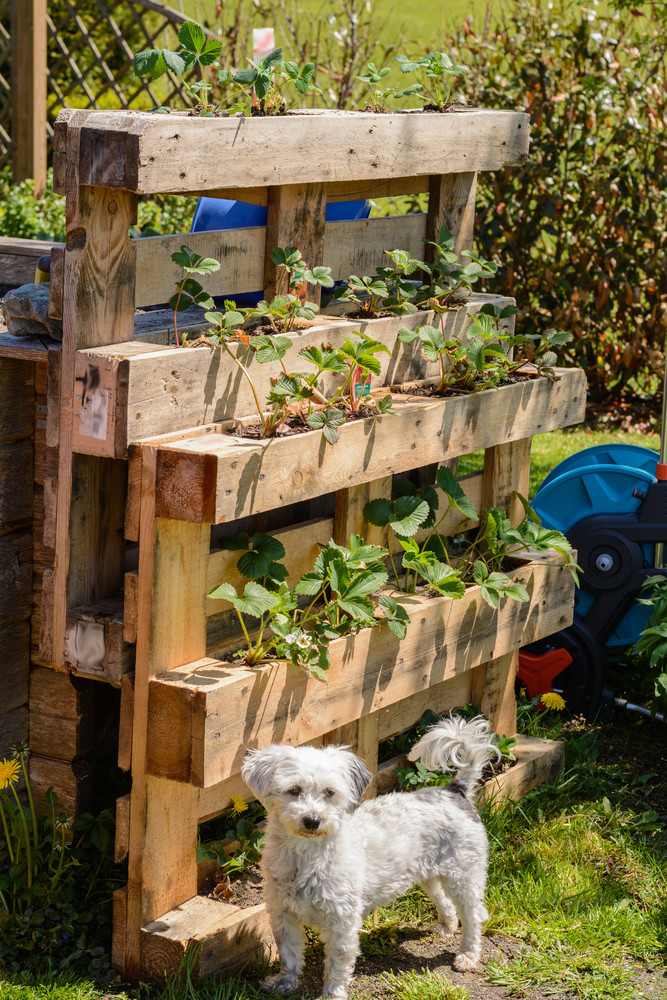
Hang a DIY vertical planter to really pack in the foliage to your garden this spring!
Vertical planters work well for those with limited space – like a patio – or those with none at all, such as apartment owners.
This easy project by Upcycle That uses a reclaimed pallet to plant within.
Note: When selecting a pallet to plant on, make sure it hasn’t been treated with harsh chemicals. Look for those that are pressure- and heat-treated (marked with ‘HT’) rather than chemically treated ones, marked as ‘MB’. Learn more about working with pallets and pallet projects here.
13. Automatic Watering System
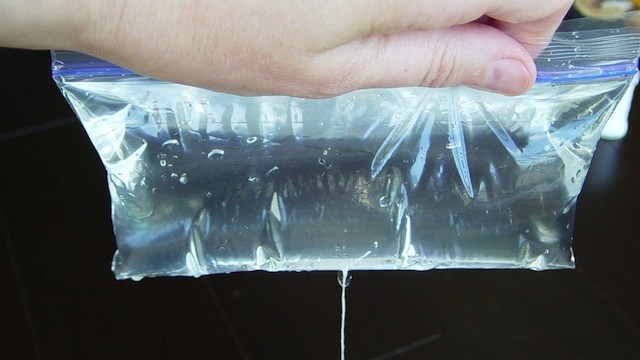
Although your garden might be a labor of love, you can cut down on the amount of labor by installing an automatic watering system. These simple but effective hydration systems are ideal for those times when you are out of town, or have a hectic schedule.
Build an automatic plant watering system from plastic bags and thread and you’ll never have to worry about thirsty, withered flowers again! Here is how you do it.
If this is a little too much work for you, an easier option is to make a wine bottle waterer – as featured here.
14. Construct a Greenhouse
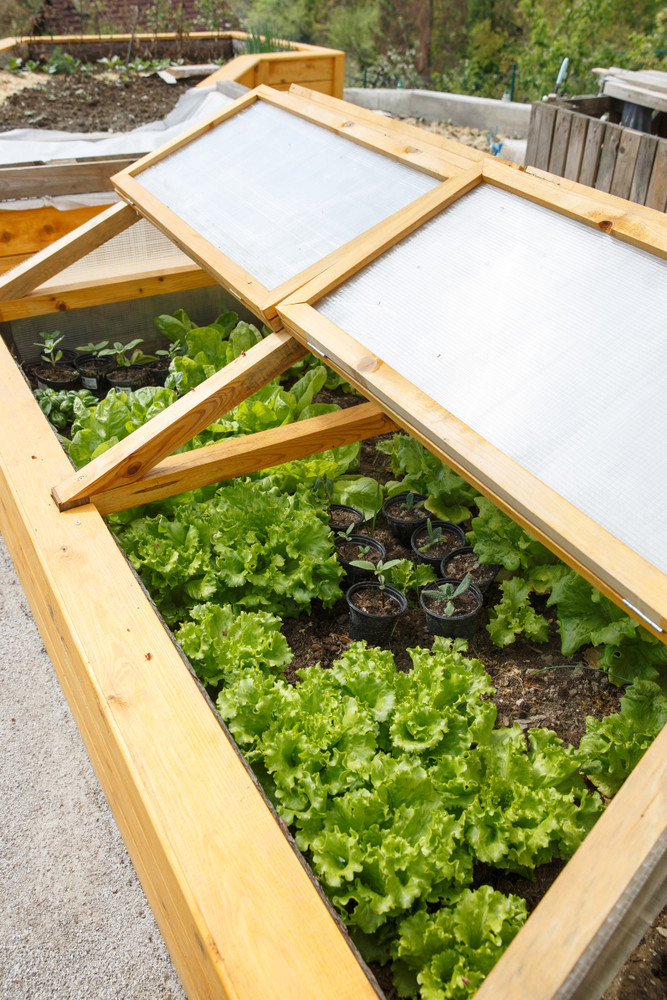
Depending on your zone, you may need a greenhouse all year round, so what better time to start building than in spring – the start of the growing season?
While it may seem like a daunting task, a large summer bounty of juicy tomatoes, fresh peppers and crisp cucumbers will make your hours of hard work seem worth it.
Discover how to make this 300 square foot windproof hoop house for under $500!
If that’s a little too big, check out these 21 DIY greenhouses to suit all gardens and budgets.
15. Warm Up with a Fire Pit

When the garden comes to life in Spring, nature lovers just want to get outdoors and enjoy the newly blossomed flowers and pretty green foliage. Unfortunately, many Springtime gardens can be cold, especially in the evenings.
This year, combat the chill with your very own DIY fire pit! It will double the appeal of the garden, make outdoor dining a treat, and entice family and friends to sit out with you.
One of these 13 DIY Fire Pit Ideas is sure to appeal to you.
